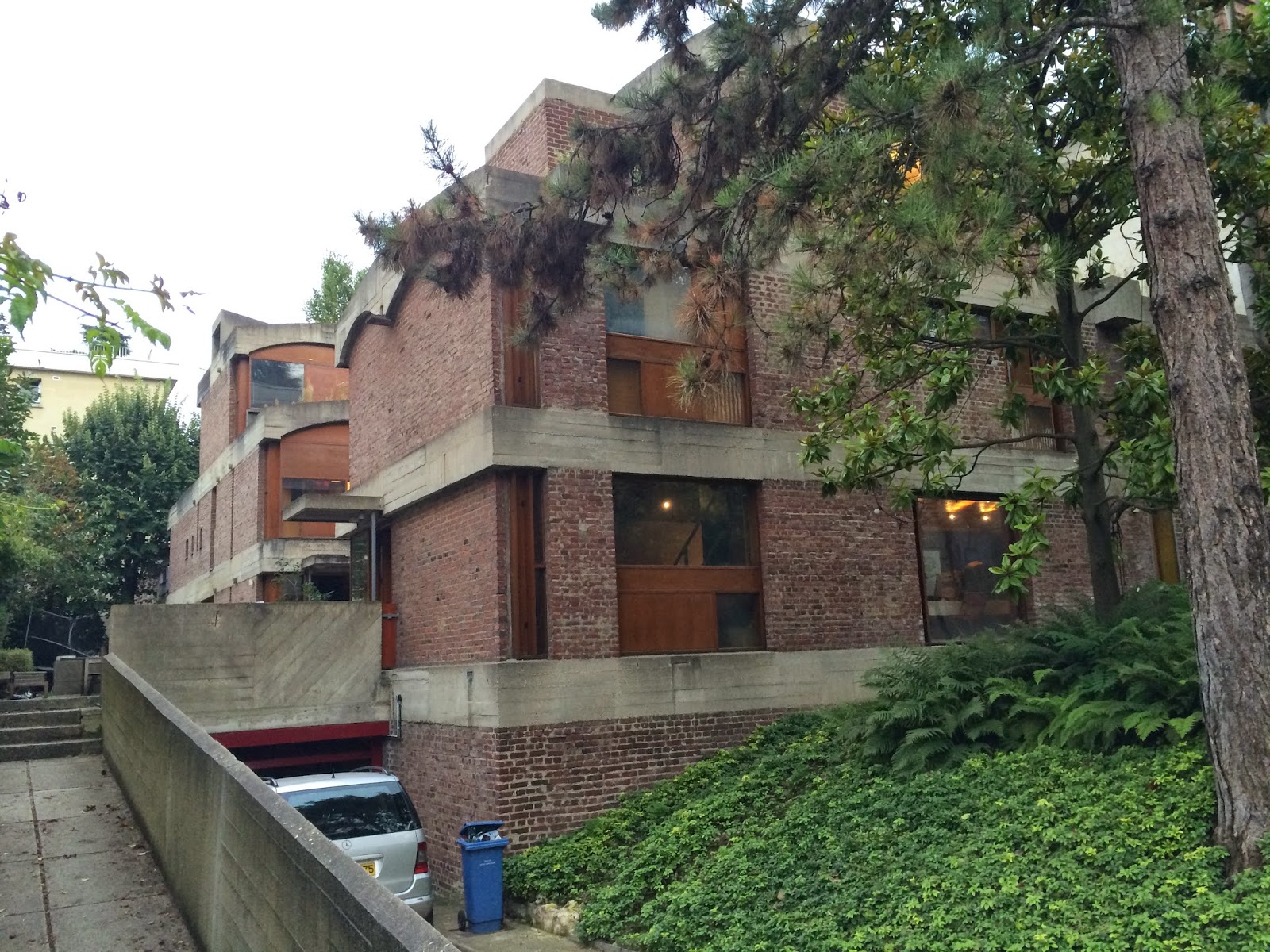 |
| Villa Savoye |
But firstly, a few words on the golden ratio. I won't go into all the detail because you can find plenty on the net, but in short it is a mathematical ratio related to the Fibonacci sequence. It pops up in nature, and it is linked to what humans perceive as aesthetically beautiful.
But it doesn't stop there. Put on your physicist hat, and you'll discover the ratio also results from objects repelling each other. Switch to your biologist hat, and you'll discover that the growing points of living creatures are driven by dividing cells moving away from each other in the most efficient way (explaining why the ratio can be seen in nature).
Switch to your evolutionary psychology hat (my favourite hat), and you'll discover that at some point in our evolutionary history our brains must have evolved a special bias for recognising the golden ratio, equating it to healthy cell growth. A kind of "fitness" indicator, and the start of us subconsciously linking it to beauty.
Evolution would have then turned up the dial following the Fisherian runaway theory, increasingly favouring people with physical features and proportions following the golden ratio, as well as increasingly favouring people who show a psychological preference for the golden ratio. This explains why the ratio can be found in people, and explains why we perceive things with the ratio to be beautiful.
A lot of this was unknown during Le Corbusier's time (especially the last bit because it's my own personal theory), however you can see how it would have caught his interest and why he started to incorporate it into his design.
So...back to the architecture.
Key buildings in and around Paris:
•• Maison La Roche (1923): 10, square du Docteur Blanche, 75016 Paris. Interior visits possible, open Mon to Sat.
•• Maison Jeanneret (1925): 8, square du Docteur Blanche, 75016 Paris. Next door to Villa La Roche. Exterior only.
•• Villa Savoye (1928): 82, rue de Villiers, 78300 Poissy. Interior visits possible, open Tue to Sun. Access by taking RER A to Poissy, then Bus 50 towards La Coudraie, getting off at Villa Savoye or Lycée Le Corbusier. This is one of his best examples showcasing his "five points of architecture" concept, which consists of stilts, roof gardens, open-plan design, free-floating facades, and horizontal windows.
•• Armée du Salut, Cité du Refuge (1929): 12, rue de Cantagrel, 75013 Paris. Exterior only.
•• Le Corbusier studio-apartment (1931-34): 24, rue Nungesser et Coli, 75016 Paris. His studio-apartment occupied the two upper floors. Interior visits possible, open Sat.
•• Maisons Jaoul (1951): 81bis, rue de Longchamp, 92200 Neuilly-sur-Seine. Exterior only.
•• Maison du Brésil, Cité Internationale Universitaire (1953): 7L, bvd Jourdan, 75014 Paris. Interior visits possible, open Mon to Sat. Near Pavillon Suisse.
Other buildings in and around Paris. Only for the devoted. These are either less interesting or their access is limited making them difficult to see properly:
•• Maison-atelier du peintre Amédée Ozenfant (1922): 53, avenue Reille, 75014 Paris. Visible from street.
•• Maison Planeix (1924): 24bis, bvd Massena, 75013 Paris. Visible from street.
•• Villa Stein-de-Monzie, "Les Terrasses" (1926): 17, rue du Professeur Victor Pauchet, 92240 Vaucresson. This is one of his better examples where he used the golden ratio and his "Modular" design concept. Only partly visible, and from a distance.
•• Maison Cook (1926): 6, rue Denfert-Rochereau, 92100 Boulogne-sur-Seine. Visible from street.
•• Armée du Salut, Palais du Peuple (1926): 29, rue des Cordelières, 75013 Paris. Only partly visible, and from a distance.
•• Maison de week-end "Henfel" (1934): 49, avenue de Chesnay, 78170 La Celle-Saint-Cloud. Only partly visible, and from a distance.
Tips and notes:
•• Check specific opening times before visiting sites, as they are all over the shop.
•• For more info, visit the Fondation Le Corbusier website.
 |
| Maison La Roche |
 |
| Armée du Salut, Cité du Refuge |
 |
| Pavillon Suisse, Cité Internationale Universitaire |
 |
| Le Corbusier studio-apartment |
 |
| Maisons Jaoul |
 |
| Maison du Brésil, Cité Internationale Universitaire |
 |
| Maison-atelier du peintre Amédée Ozenfant |
 |
| Maison Planeix |
 |
| Villa Stein-de-Monzie, "Les Terrasses" |
 |
| Maison Cook |
 |
| Armée du Salut, Palais du Peuple |
No comments:
Post a Comment